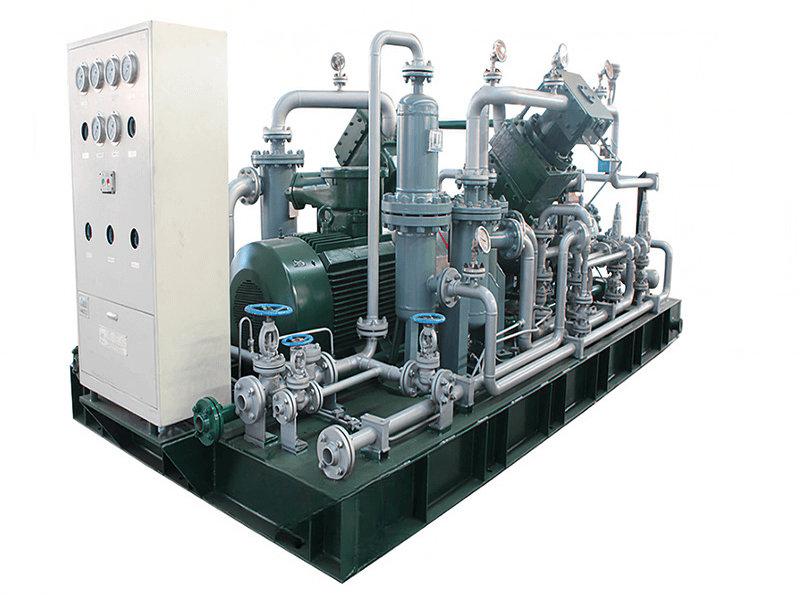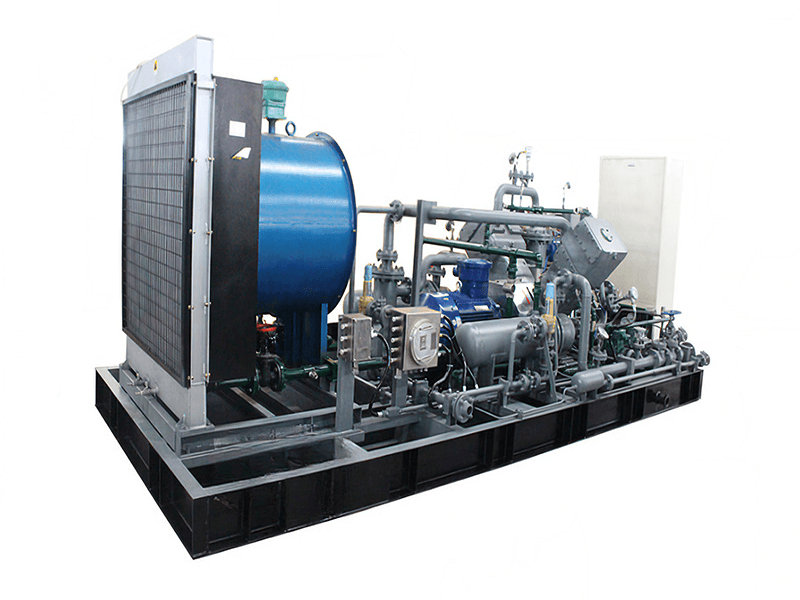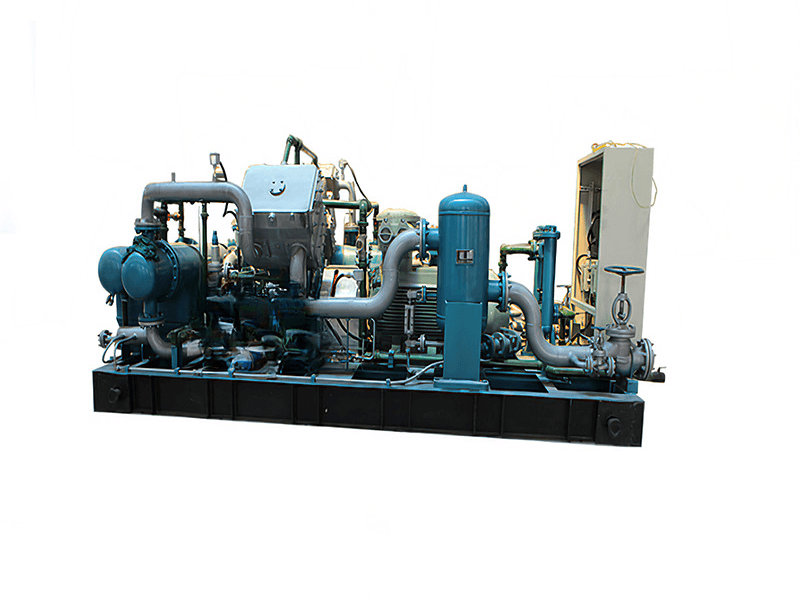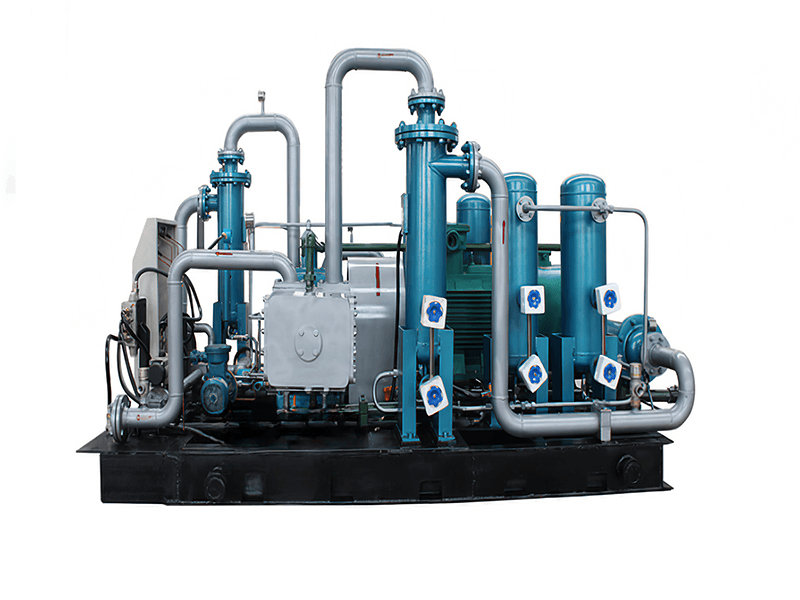Boil off gas (BOG) refers to the vaporized gas that is generated when a liquid or cryogenic substance undergoes a phase change from a liquid to a gas due to heating or natural evaporation. It commonly occurs in the storage and transportation of liquefied gases, such as liquefied natural gas (LNG), liquefied petroleum gas (LPG), and liquid nitrogen.
When these substances are stored or transported at extremely low temperatures and under pressure, some of the liquid will naturally evaporate, resulting in the release of gas. This evaporated gas is known as boil off gas.
The generation of boil off gas can occur due to various factors, including:
1. Heat Ingress: External heat entering the storage or transportation system can cause the liquefied gas to warm up and vaporize, leading to the production of boil off gas.
2. Insulation Inefficiencies: Inadequate insulation or insulation failure can result in heat transfer to the stored or transported liquid, causing it to vaporize and produce boil off gas.
3. Natural Boil Off: Some liquefied gases, such as LNG, have inherent vaporization rates even in well-insulated systems. This is due to the natural heat ingress from the surroundings, resulting in the generation of boil off gas.
Boil off gas is typically captured and managed in various ways to prevent its release into the atmosphere or to utilize it as a valuable resource. The management methods may include:
1. Re-liquefaction: Boil off gas can be compressed, cooled, and condensed back into a liquid form through re-liquefaction systems. This allows the recovered gas to be returned to the storage or transportation system, minimizing losses.
2. Fuel for Power Generation: Boil off gas can be utilized as fuel for power generation by combusting it in gas turbines or other power generation systems. This helps offset energy consumption and reduces the need for external fuel sources.
3. Storage or Flaring: In some cases, boil off gas may be temporarily stored or flared off if it cannot be immediately utilized or re-liquefied. Flaring involves the controlled combustion of the gas to prevent its release into the atmosphere.
4. Boil Off Gas in LNG Industry: Boil off gas is particularly significant in the liquefied natural gas (LNG) industry. LNG is stored and transported at cryogenic temperatures to maintain it in a liquid state. However, due to heat ingress and natural boil off, LNG tanks and carriers experience the generation of boil off gas. Efficient management of boil off gas is crucial to maintain the LNG at the desired temperature and prevent excessive pressure build-up.
5. Boil Off Gas Recovery Systems: To minimize boil off gas losses and utilize the gas effectively, boil off gas recovery systems are employed. These systems capture the boil off gas, compress it, and re-liquefy it through cooling and condensation. The recovered gas is then either returned to the storage or transportation system or used for other purposes such as power generation or fueling.
6. Boil Off Gas Composition: The composition of boil off gas can vary depending on the type of liquefied gas. In the case of LNG, boil off gas primarily consists of methane, which is the main component of natural gas. However, it may also contain small amounts of other hydrocarbons, nitrogen, and traces of impurities.
7. Boil Off Gas Rate: The rate at which boil off gas is produced depends on various factors, including the storage or transportation conditions, insulation effectiveness, and ambient temperatures. The boil off rate is a critical parameter to consider for the design and operation of LNG storage and transportation systems.
8. Safety Considerations: Boil off gas management is essential for safety reasons. Uncontrolled accumulation of boil off gas can lead to increased pressure within storage tanks or carriers, potentially resulting in safety hazards. Proper monitoring, control, and venting systems are implemented to maintain safe operating conditions and prevent over-pressurization.
9. Environmental Impact: Uncontrolled release of boil off gas into the atmosphere can contribute to greenhouse gas emissions and air pollution. Therefore, minimizing boil off gas losses and implementing effective recovery and utilization systems are important for reducing the environmental impact of liquefied gas storage and transportation operations.
Boil off gas management is a critical aspect of handling liquefied gases to ensure efficient utilization, safety, and environmental responsibility. The development of advanced technologies and systems for boil off gas recovery and utilization continues to improve the overall efficiency and sustainability of the LNG and other liquefied gas industries.
Boil off gas compressor
A boil off gas compressor is a type of compressor specifically designed to handle and compress the boil off gas generated in liquefied gas storage and transportation systems. It is used to capture, compress, and manage the boil off gas, preventing its release into the atmosphere and allowing for its utilization or re-liquefaction.
Here are some key features and functions of boil off gas compressors:
1. Gas Compression: The primary function of a boil off gas compressor is to compress the generated gas to a higher pressure. This compression allows for efficient handling, transportation, and utilization of the boil off gas.
2. Pressure Increase: Boil off gas compressors raise the pressure of the gas to overcome the back pressure in the storage or transportation system. This ensures that the gas can be effectively managed and either re-liquefied, utilized as fuel, or returned to the storage or transportation system.
3. Gas Recovery: Boil off gas compressors play a crucial role in the recovery of the boil off gas. By compressing the gas, it can be captured and prevented from escaping into the atmosphere, minimizing product losses and environmental impact.
4. Re-liquefaction Support: Boil off gas compressors are often used in conjunction with re-liquefaction systems. These compressors help in the re-liquefaction process by compressing the boil off gas before it undergoes cooling and condensation for re-liquefaction.
5. Temperature Management: Boil off gas compressors also aid in temperature management within the storage or transportation system. By compressing the gas, its temperature increases, allowing for better control and optimization of the system's temperature profile.
6. Safety Measures: Boil off gas compressors are equipped with safety features to ensure reliable and safe operation. These may include pressure relief valves, temperature monitoring systems, and emergency shutdown mechanisms to protect against over-pressurization or other operational hazards.
Boil off gas compressors are typically designed to handle specific types of gases and are tailored to the requirements of the storage or transportation system. They are engineered to withstand the cryogenic temperatures and other challenges associated with handling liquefied gases. It is important to select a boil off gas compressor that is appropriately sized, designed, and rated for the specific application to ensure reliable performance and efficient boil off gas management.
The working principle of boil off gas compressor
The working principle of a boil off gas compressor is similar to that of other compressors, where it involves the intake, compression, and discharge of gas. The specific working principle of a boil off gas compressor can vary depending on its design, type, and configuration. However, here is a general overview of the working principle:
1. Gas Intake: The boil off gas, which is generated due to the evaporation of liquefied gas, is drawn into the compressor through an intake port or inlet. The gas enters the compressor at a relatively low pressure.
2. Compression: The compressor contains one or more compression stages where the gas is compressed to a higher pressure. The compression is achieved using various mechanisms, such as pistons, screws, or centrifugal impellers, depending on the type of compressor.
3. Mechanical Energy Input: The compressor requires a source of mechanical energy to drive the compression process. This energy can be provided by an electric motor, a gas turbine, or an engine, depending on the specific application and requirements.
4. Cooling and Lubrication: During the compression process, the gas temperature increases due to the compression work. To prevent overheating, the compressor may employ cooling mechanisms, such as intercoolers or water jackets, to maintain the gas temperature within safe limits. Additionally, lubrication systems are used to reduce friction and ensure smooth operation of moving parts within the compressor.
5. Pressure Increase: As the gas passes through each compression stage, its pressure progressively increases. The specific pressure ratio and discharge pressure are determined by the design and requirements of the application.
6. Discharge: Once the gas has been compressed to the desired pressure, it is discharged from the compressor through a discharge port or outlet. The compressed gas can then be directed for utilization, re-liquefaction, storage, or other purposes, depending on the specific system requirements.
7. Control and Regulation: Boil off gas compressors are often equipped with control systems to regulate the compression process. These systems monitor and adjust factors such as suction pressure, discharge pressure, and flow rate to maintain optimal performance and ensure safe operation.
8. Gas Treatment: In some cases, the boil off gas may require treatment before compression. This treatment can involve the removal of impurities, moisture, or other contaminants that could affect the compressor's operation or the downstream processes.
9. Multi-Stage Compression: Boil off gas compressors may employ multiple compression stages to achieve the desired pressure increase. Each stage consists of a set of compression elements, such as pistons, screws, or impellers, arranged in series or parallel configurations. Multi-stage compression allows for higher pressure ratios and improved efficiency.
10. Heat Management: Boil off gas compressors may incorporate heat management systems to address the heat generated during compression. This can include intercoolers, aftercoolers, or heat exchangers that help remove excess heat and maintain the gas temperature within acceptable limits.
11. Safety Considerations: Boil off gas compressors are designed and equipped with safety features to ensure reliable and safe operation. These features may include pressure relief valves, temperature monitoring, emergency shutdown systems, and alarms to protect against over-pressurization, excessive temperatures, or other abnormal operating conditions.
12. System Integration: Boil off gas compressors are typically integrated into larger systems that include storage or transportation infrastructure, re-liquefaction units, and other associated equipment. Proper integration and coordination with these systems are crucial to ensure efficient and effective boil off gas management.
It's important to note that the working principle and specific details of boil off gas compressors can vary depending on the design, manufacturer, and application. The selection and operation of a boil off gas compressor should be based on the specific requirements and conditions of the liquefied gas storage or transportation system to ensure optimal performance and reliability.


























